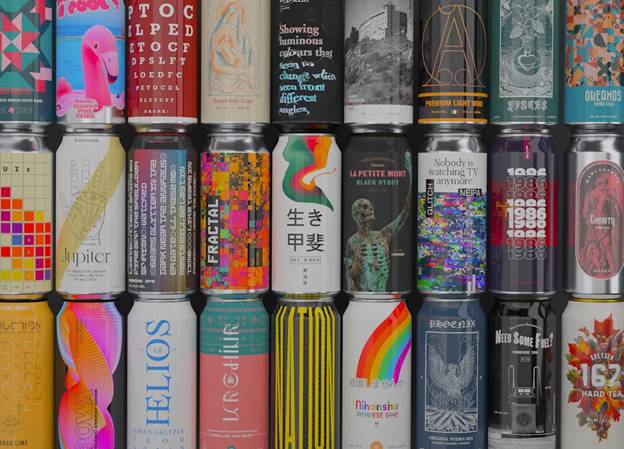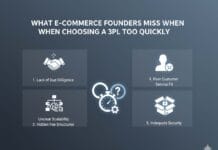
Custom packaging differs from stock packaging due to its unique design element. Brands can leverage the customization facilities to create their unique visual identities using distinctive designs. A well-designed product packaging always aligns with the brand’s personality and customer preferences.
However, perfection can be achieved only when you consider the useful design tips when customizing product packaging. If you want to boost your brand using the design packaging design tips, this blog is for you.
Read on to explore 7 amazing design tips to customize jaw-dropping custom packaging!
1. Use Consistent Visual Language
A perfect packaging design ensures consistent branding for your business. It works more than just a design because you can create a visual identity of your brand using the right packaging design. The color scheme, design patterns, and typography you have used for your branding design must align with every product package you use.
Also, the tone of voice should resonate with your brand persona when creating custom packaging boxes and bags. For example, if designing custom printed mylar bags, ensure you choose color scheme, typography, design patterns, and imagery that reflect the essence of your brand. You can also add a unique touch to each product package to ensure it represents what product you are selling and how it benefits your customers.
2. Add Personalized Touch
What makes custom packaging different from stock and discreet packaging is that it relates to every customer who sees it. Meaning, it must have a personalized touch that connects with your customers on a deeper level. You can incorporate surprise elements, personalized messages, and smart features to make your customers feel valued.
Portray your brand story and mission using designs that help your brand make a strong impression. For example, you can promote sustainability using eco-friendly inks, nature-inspired imagery, and personalized ethical messages. Another excellent way to add a personalized touch is to use seasonal themes for your product packaging that evoke customers’ emotions and boost sales.
3. Choose Sustainable Materials
When it comes to designing packaging that makes a greater impact for your brand, materials matter most because they work as a canvas for your creativity. The right materials not only help you design packaging for product protection but also build a brand perception. Choose kraft paper if you want 100% biodegradable packaging.
The best thing about Kraft is its natural rustic charm that helps you design vintage product packaging that conveys a historic trust among customers. Cardboard is a sustainable material with an excellent surface for printing and customization to create unique designs. Whether you want to incorporate minimalistic, bold, neo-vintage, funky, whimsical, or playful designs, sustainable materials support all kinds of customization.
4. Pick Aesthetically Functional Designs
Given the fact that design is somehow associated with aesthetics. This is why most brands pay special attention to make their product packaging aesthetically pleasing. However, you need to understand that aesthetics without functionality do not work for long-term results. This is why you must focus on designs that are aesthetically functional and help your brand stand out.
You can use minimalist design themes for an uncluttered and easy-to-read product packaging design. Likewise, you can use styles for boxes, such as custom gable boxes, that are visually appealing and also handy due to their user-friendly design. Ensure the design you use for product packaging resonates with the “5 P’s” of packaging: Promote, Position, Present, Provide, and Protect.
5. Ensure Design Aligns with Your Customers
A persuasive product packaging design attracts maximum customers because it always aligns with what customers like. If you want customers not to skip your product packaging, understand the color psychology and use those colors while keeping in mind consistent branding. Customers are naturally attracted to certain colors, imagery, and designs. Leverage customers’ preferences and design packaging accordingly. For example, customers are more eco-aware and are inclined to brands that follow ethical practices.
You can use sustainable materials, eco-friendly inks, and nature-inspired designs to show your brand’s dedication to a greener environment. And see how many eco-conscious customers would get impressed by your product packaging. Likewise, you can add interactive elements such as QR codes, promo codes, and surprise elements to win the trust of your customers and increase customer retention.
6. Opt Custom Shapes for Enhanced Shelf Impact
The shape of your product packaging is one of the most important factors when designing custom packaging. One reason is that it enhances the shelf appearance of your product. And the other reason is that unique shapes grab customers’ attention at first glance. For example, if you get your soaps packed in two different boxes for A/B testing, one in a standard rectangular box and the other in a pillow-shaped box with a window cut-out.
There are higher chances you will experience higher customer engagement with pillow soap boxes with windows due to their unique shapes and features. Likewise, you can experiment with custom shapes for window cut-outs. For instance, a product packaging with various small windows in mini custom star shapes can leave a greater impact.
7. Go with Custom Dimensions for Precision
When investing time, effort, and money in creating custom packaging in unique designs, never ignore the size of the product packaging. Always ensure that the packaging boxes and bags ensure a snug fit for your products. What makes custom packaging different from stock packaging is that it ensures precision and aligns with the dimensions and shapes of products.
The right packaging design will be perfect from every aspect. If you are selling different sizes of the same product that your competitors are also selling. You can create personalized packages to make a difference instead of packing them in stock packaging that can not offer a snug fit.
Final Words!
Design is a vital element of every brand’s product packaging, as it helps the brand create a unique visual identity to stand out in the competitive market. You can uplift your brand using custom packaging designed with precision, considering all the important factors related to it. Follow useful design tips, such as a personalized touch, custom shapes, aesthetics, functionality, enhanced shelf appearance, and consistent branding.





